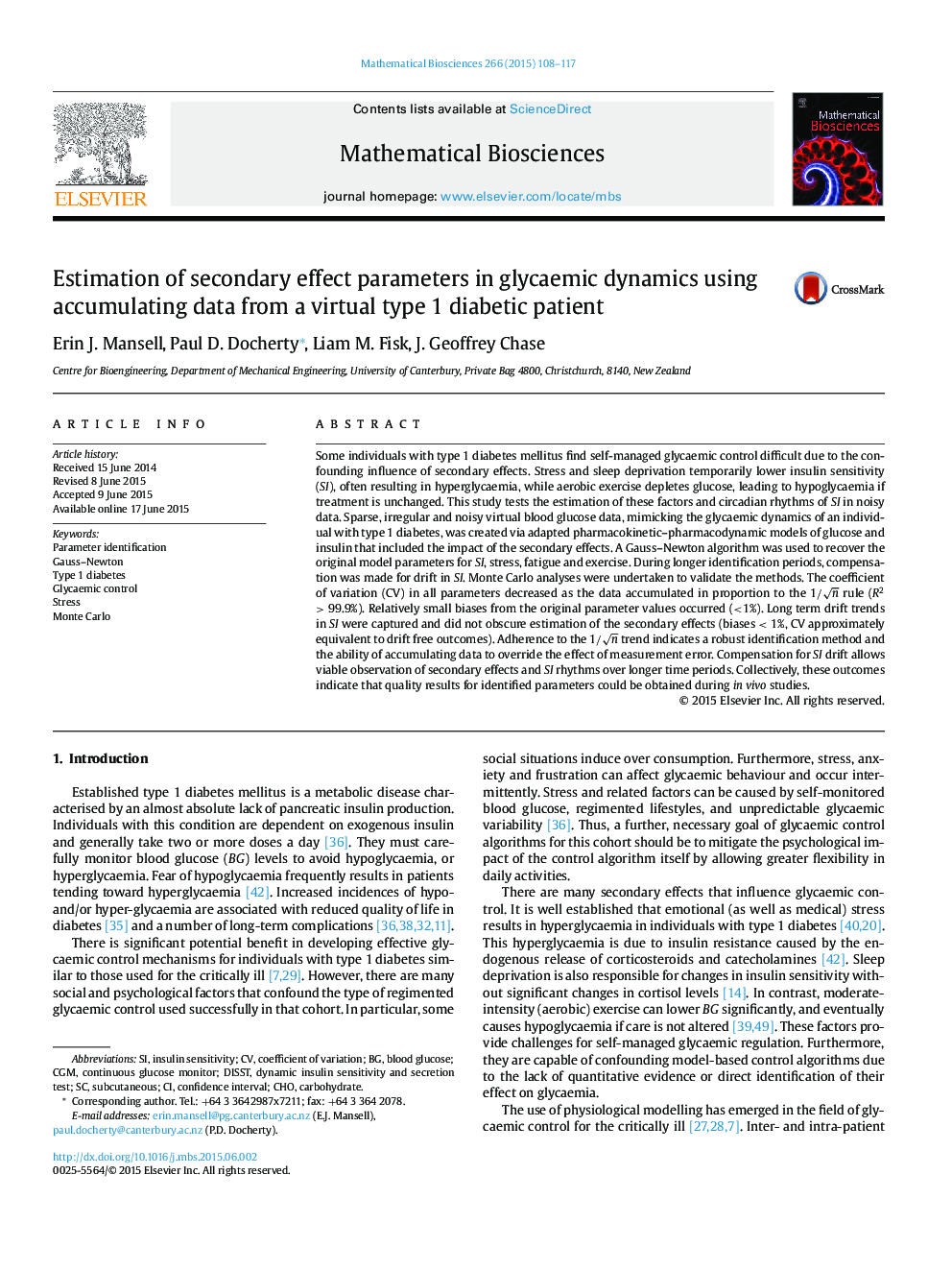| کد مقاله | کد نشریه | سال انتشار | مقاله انگلیسی | نسخه تمام متن |
|---|---|---|---|---|
| 4500009 | 1624014 | 2015 | 10 صفحه PDF | دانلود رایگان |
• Stress, exercise and fatigue identified in type 1 diabetic glycaemic model data.
• Identified parameter distribution adheres to 1/√n rule for increasing data.
• Robust to long-term drift in metabolism, producing comparable results.
• Successful identification of secondary effect parameters in sparse, noisy data.
Some individuals with type 1 diabetes mellitus find self-managed glycaemic control difficult due to the confounding influence of secondary effects. Stress and sleep deprivation temporarily lower insulin sensitivity (SI), often resulting in hyperglycaemia, while aerobic exercise depletes glucose, leading to hypoglycaemia if treatment is unchanged. This study tests the estimation of these factors and circadian rhythms of SI in noisy data. Sparse, irregular and noisy virtual blood glucose data, mimicking the glycaemic dynamics of an individual with type 1 diabetes, was created via adapted pharmacokinetic–pharmacodynamic models of glucose and insulin that included the impact of the secondary effects. A Gauss–Newton algorithm was used to recover the original model parameters for SI, stress, fatigue and exercise. During longer identification periods, compensation was made for drift in SI . Monte Carlo analyses were undertaken to validate the methods. The coefficient of variation (CV) in all parameters decreased as the data accumulated in proportion to the 1/n rule (R2 > 99.9%). Relatively small biases from the original parameter values occurred (<1%). Long term drift trends in SI were captured and did not obscure estimation of the secondary effects (biases < 1%, CV approximately equivalent to drift free outcomes). Adherence to the 1/n trend indicates a robust identification method and the ability of accumulating data to override the effect of measurement error. Compensation for SI drift allows viable observation of secondary effects and SI rhythms over longer time periods. Collectively, these outcomes indicate that quality results for identified parameters could be obtained during in vivo studies.
Journal: Mathematical Biosciences - Volume 266, August 2015, Pages 108–117
